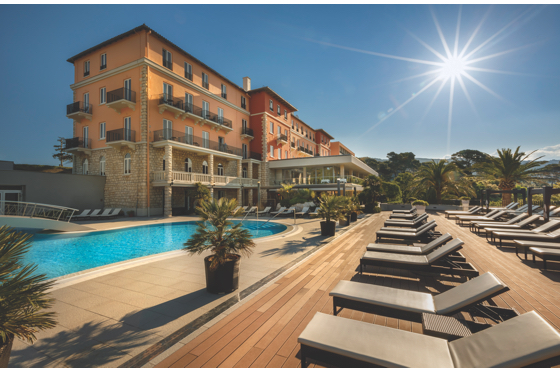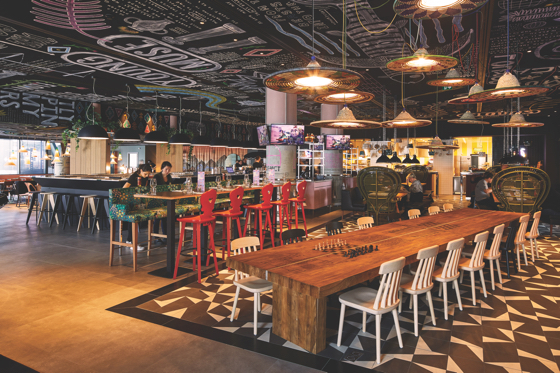As globalization drives travelers beyond top-tier cities, the former Yugoslavia and its neighbors are striving to replace the image of a war-torn landscape with one of unspoiled nature, ancient landmarks, cultural optimism, political stability and transactional transparency.
Yet hotel supply is lacking, particularly 4- and 5-stars. But now, according to Siniša Topalovic, managing partner at Horwath HTL in Croatia, the area has 6,500 to 7,500 rooms and around US$1.5 billion in projects in the pipeline, suggesting an average investment of US$200,000 per key.
Croatia, Slovenia and Montenegro are seeing double-digit growth and have the largest forecast for 5-star rooms, Topalovic said. “Although the region still poses challenges, the risks are manageable and can potentially offer investors high rates of return.”
Croatia has led the way in mainstream development and has the largest pipeline of 4-star rooms, along with Serbia, Topalovic said, with the recent combined investment of US$740 million into Zagreb, Dubrovnik and Split airports key to the success.

Valamar Riviera, Croatia’s largest upscale hotel owner and operator, has about 12% of accommodation capacity in the country. “In recent years, labor cost has increased and labor supply is a challenge for the tourism industry,” said Ivana Budin Arhanic, Valamar Riviera’s vice president of business development and corporate affairs. Along with high income taxes, “all of these lead to lower investment levels than what we would expect, given very high demand for Croatia as a destination,” she said.
Croatia’s 2013 membership in the European Union fueled growth, but the notion of oversupply is a misconception, said Tomislav Popovic, CEO of Maistra, which owns and manages all of its more than a dozen hotels and resorts except the Hilton Dubrovnik. “We would really like to see serious competitors because it could be a serious step forward for the whole country,” he said.
One of the country’s few companies to develop greenfield properties, Maistra’s Popovic said, “60% of tourist nights are in private accommodation. The government needs to become much more serious with regulations and help these hosts convert to small hotels.”
Developed with the World Bank, Albania’s integrated coastal management plan aims to attract investment to its pristine, 280-mile “riviera.” The country wants to encourage investment in “high-class branded hotels” to attract European tourists who stay longer and spend more, says Blendi Kosi, Albania’s new minister of tourism and environment. “Improving quality in all accommodation structures has been a big challenge.”
Government sweeteners for investors constructing 4- and 5-star hotels and luxury resorts include 10-year corporate income tax exemption, 6% VAT on services and subsidies of 40% to 60% for some categories of historical restoration.
Positive attitude
According to Petra Stušek, managing director of the Ljubljana Tourism Board, 11.9% of Slovenia’s GDP comes from the travel industry, and overnight stays increased 12.6% in 2017. The InterContinental Ljubljana, the city’s first 5-star hotel, opened in August 2017.
Slovenia’s 2017-2021 Strategy for Sustainable Growth and recognition as the European Green Capital of 2016 strengthened a reputation for eco-tourism. Also drawing attention is BTC, a new IT and startup hub. “If the government eases business regulations, it will be more attractive for investors,” Stušek said. “They need to show a positive business attitude.”
Labor is an issue, said Nikola Avram, CEO of Serbia’s MK Hotels. “The fiercest challenge for international brands is about successfully managing local people, and consistently guaranteeing the highest level of service,” he said.
Since launching in 2009, MK helped adapt the domestic business mindset to international standards, operating Kempinski properties in Croatia and Slovenia and working with Marriott International to open the Sheraton Novi Sad in March.
So far, Serbia’s EU candidacy has not elevated prices, according to Avram, who said property and construction costs in Belgrade and Kopaonik are US$230 to US$465 per square foot.
Despite investor skepticism, potential returns “are very difficult, almost impossible, to find in Western European countries,” said Anna Ivanovic, vice president in the region for JLL Hotels & Hospitality Group. “The capitals of former Yugoslavia are currently where key CEE cities like Budapest, Prague and Warsaw were five to 10 years ago.”
Ivanovic added, “Once one big player … opens their flagship in a destination, its competitors will be looking to do the same.”

Timing is everything
The opening in March of Mama Shelter Belgrade, developed by Israeli owner Ashtrom, triggered a rethink of Serbia’s hospitality industry. “We fill a gap in the market because … people want to have fun at the kinds of places they see in Paris,” said Mama Shelter President Serge Trigano.
It’s a challenge to find employees willing to work weekends and evenings. But “young Serbian people are very proud of their country and eager to show it’s changed. It’s no more what happened in the last 20 years.” Trigano added, “It’s definitely for us a good time to start working in that part of the world. There is huge potential in this country and in other countries like Romania and Bulgaria.”
Contributed by Alicia Sheber
